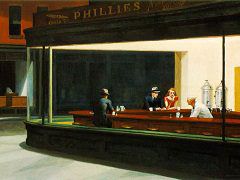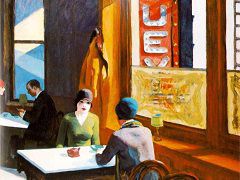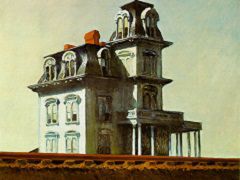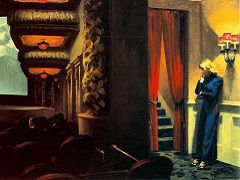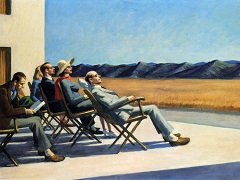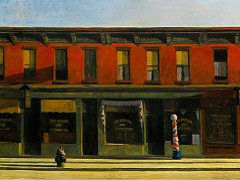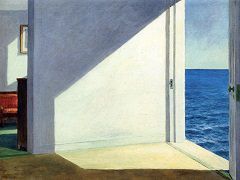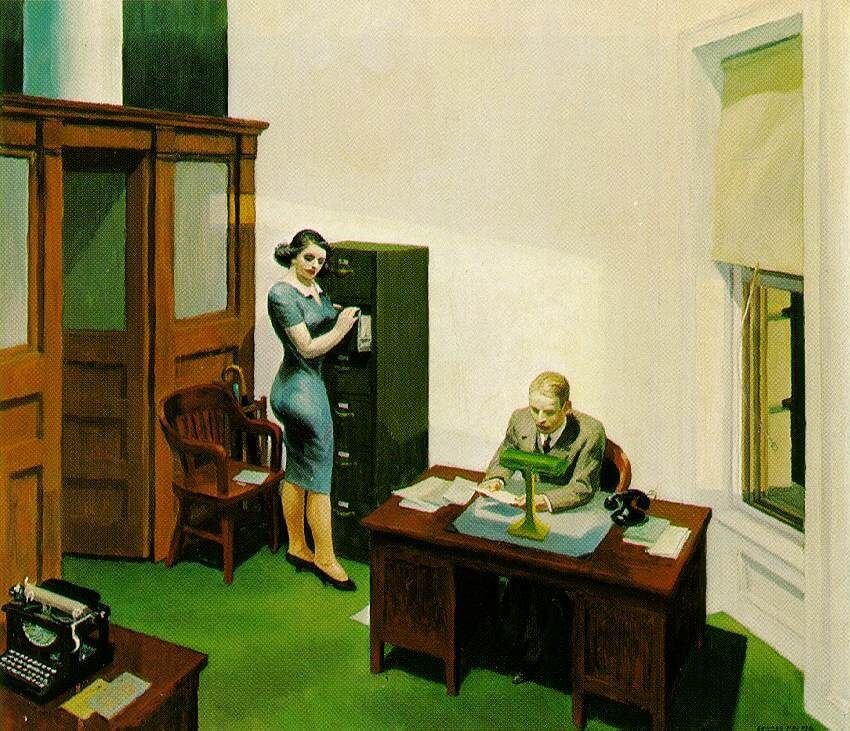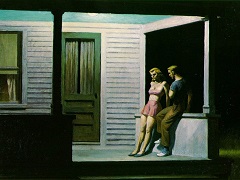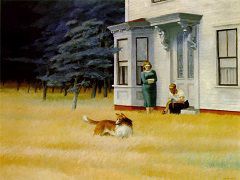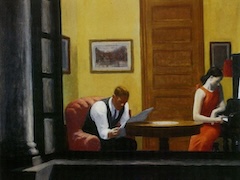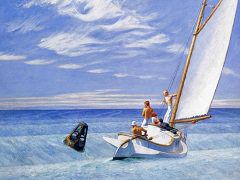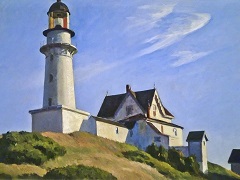East Wind Over Weehawken, 1934 by Edward Hopper
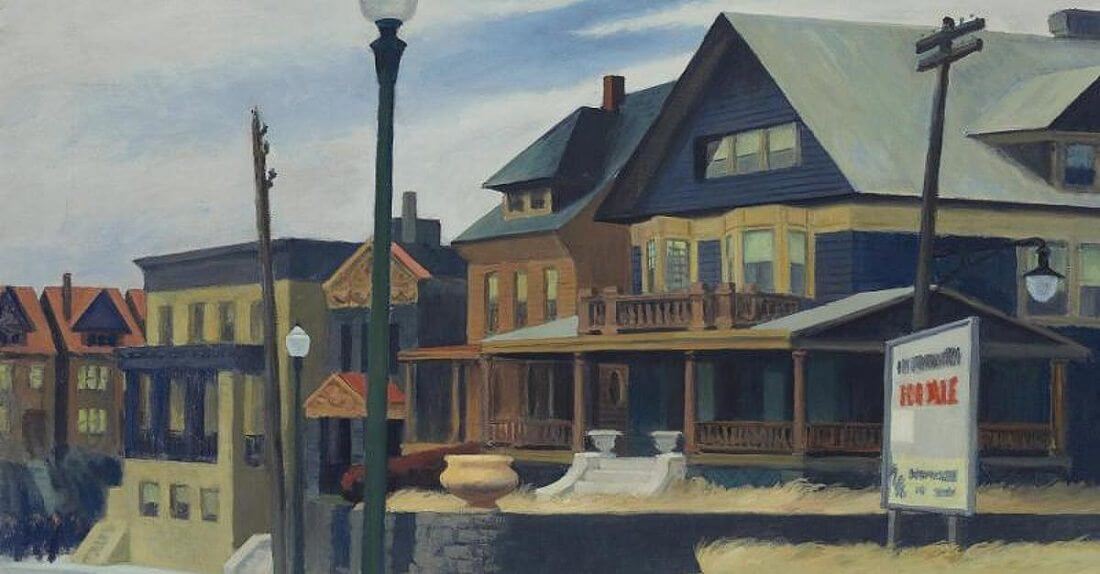
Painted in March 1934, shortly after Edward Hopper's retrospective at the Museum of Modern Art in New York, and during a moment when he was rethinking his art, East Wind Over Weehawken can be seen as the birth of his fully realized, mature artistic vision.
East Wind Over Weehawken is a street scene of a "curiously mismatched collection of four houses", rendered in dark, earthy tones. Hopper writes in his poem about this painting that "only the grass, the uncut dead grass,
shows where the wind is."
In East Wind Over Weehawken Hopper presents a quiet street in the "cold raw weather" of a March afternoon. While the houses are all in good order, the financial woes of the town's inhabitants are indicated by the "For Sale"
sign and the unkempt lawns. There are no cars on the street or people visible on the porches or in the houses' windows. The only human presence is a distant group of figures at far left, imbuing the work with an eerie silence.
Similar to the "For Sale" sign that is vexingly difficult to read, it is impossible to discern for what purpose the group of people at far left has convened. Hopper deliberately crops the image so that the answer appears to be
just beyond the edge of the canvas, introducing an unresolved narrative that simultaneously entices and rebuffs the viewer as he or she continually tries to decipher the scene.
As with all his most successful works, in East Wind Over Weehawken, Hopper maintains a strong sense of place and an overt realism, while seeking to capture what he described in 1933 as "the most exact transcription
possible of my most intimate impressions of nature."

